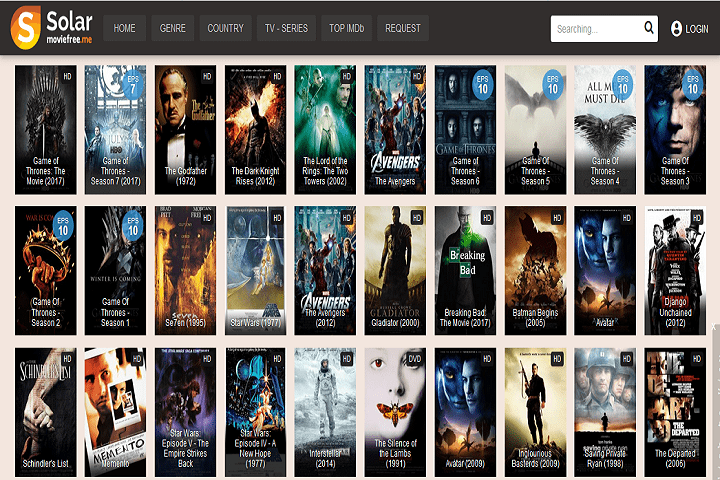Business
7 Tips to Help the Technological Transformation from Your Business
7 Tips to Help the Technological Transformation from Your Business. Prioritize Needs, Invest in Training, Highlight the Benefits

Adopting technology is a must and not an excess for today’s businesses. Notwithstanding the costs, it is a must to implement innovative systems and processes to be more competitive. Introducing new technology, however, isn’t always straightforward. To help ensure you have the best outcomes, keep on reading, and we’ll talk about some of the things to do to make the transition easier.
Table of Contents
1. Prioritize Needs

Businesses do not need to adopt every new technology. To decide which one is necessary, it is crucial to have a needs assessment. This includes identifying the goals of the organization, and from there, it will be possible to determine what technologies are essential and what are nice to have but not necessary, if the technology is not aligned with the needs and goals of the business, then implementing that force end up being a waste of resources.
2. Invest in Training
Training is one of the expected significant components of a technological transition. It provides people with the knowledge and skills to maximize the benefits of new technology. Part of the training should involve taking online certificate courses, such as those related to automation and machine learning, among others.
3. Highlight the Benefits
When adding new technology to a business, employees may be hesitant at first. One reason is that they do not understand the need for it. To ease the transition, it will help to emphasize the benefits. If the employees know how valuable technology is, they will be more open towards its adoption.
4. Choose the Right Providers
Resistance from the employees can stem from having experiences with other unreliable technology. To avoid this, choose the right providers and partners. For instance, if you are introducing new software, evaluate all possible providers to make sure that they can offer the best experience to employees.
5. Offer Incentives
Easing the transition to new tech will be more comfortable when the business offers incentives. Giving back to the users, such as in the form of bonuses for using a new system, will help to arouse interest. Learning new tech will take effort and time, so show them that you appreciate what they are doing by providing incentives.
6. Gather Feedback
After the introduction of new technology:
- Gather feedback from its users.
- Ask employees about how they feel and what they see as a potential improvement.
- Send surveys and set meetings to solicit insights.
This is a necessary action when it comes to ranking success. More so, this is also important for optimization.
7. Give It Time
Introducing new technology takes time. You cannot expect employees to adapt to it overnight. It may be a while before the results are evident, so patience is essential. Especially when it involves using a complicated system or tool, there will be resistance and mistakes at first. As operators get applied to the new technology, the benefits will be more apparent over time.
In sum, a successful technological transition does not come easy. From prioritizing needs to being patient, this article talked about some of the most important things. Doing these will make it easier for businesses to introduce new technology and maximize their returns.
Business
Navigating the Process of Selling Deceased Estate Shares
This article aims to provide a comprehensive guide to selling shares from a deceased estate. Process of Selling Deceased Estate Shares.

Table of Contents
1. Understanding the Basics of Selling Deceased Estate Shares
Dealing with a deceased estate can be a challenging and emotional process, especially when it comes to handling financial assets like shares. This article aims to provide a comprehensive guide to selling shares from a deceased estate.
2. What are Deceased Estate Shares?
Deceased estate shares refer to the stocks and shares that were owned by an individual who has passed away. These shares become part of the deceased’s estate and are subject to the terms of their will or estate plan.
3. The Importance of Valuing the Shares
The first step in selling deceased estate shares is to obtain a current valuation. This valuation is crucial for several reasons: it helps in distributing the estate among beneficiaries, it may be necessary for tax purposes, and it gives an idea of the market value of the shares.
4. Legal Requirements and Executor Responsibilities
The executor of the estate plays a pivotal role in the management and distribution of the deceased’s assets. This section will cover the legal responsibilities and steps the executor needs to take to lawfully sell the shares.
5. Obtaining Probate
Before any action can be taken with the shares, it’s often necessary to obtain probate. Probate is a legal process that confirms the executor’s authority to deal with the deceased’s assets.
Transferring Shares into the Executor’s Name
Once probate is granted, shares may need to be transferred into the name of the executor. This process varies depending on the company and the type of shares.
6. The Process of Selling Shares
After completing legal formalities, the executor can proceed with selling the shares. This section will outline the steps involved in this process, including choosing a brokerage or financial service, understanding market conditions, and making informed decisions.
Deciding on the Right Time to Sell
Timing can significantly impact the returns from selling shares. Executors need to consider market conditions and financial advice to determine the best time to sell.
Completing the Sale
This subsection will detail the actual process of selling shares, including placing orders, handling transaction fees, and ensuring all regulatory requirements are met.

7. Navigating Tax Implications and Reporting
Managing tax obligations is a critical aspect of selling deceased estate shares. This section will explain the potential tax implications and the importance of accurate reporting for both capital gains tax and inheritance tax considerations.
Understanding Capital Gains Tax Responsibilities
When shares are sold, any profit made from the time of the deceased’s passing to the sale date may be subject to capital gains tax. Executors need to be aware of these implications and plan accordingly.
Inheritance Tax Considerations
In some jurisdictions, the value of the deceased estate’s shares might impact inheritance tax calculations. It’s essential for executors to understand these aspects in order to ensure compliance with tax laws.
8. Common Challenges and How to Overcome Them
Selling deceased estate shares can present unique challenges. This section will discuss common issues such as disputed wills, fragmented information about the shares, and market volatility.
Dealing with Disputed Wills and Beneficiary Disagreements
Disputes over the will or disagreements among beneficiaries can complicate the process. Executors must handle these situations delicately and legally.
Managing Market Volatility
Shares can be subject to market fluctuations. Executors should be prepared for this volatility and may need to consult financial advisors to navigate these waters effectively.
9. Tips for Executors Handling Deceased Estate Shares
This section will provide practical advice for executors, including the importance of seeking professional advice, keeping thorough records, and communicating clearly with beneficiaries.
Seeking Professional Financial and Legal Advice
The complexity of selling shares from a deceased estate often necessitates professional advice. This can range from legal counsel to financial advisory services.
Record Keeping and Communication with Beneficiaries
Maintaining transparent and thorough records is crucial. Executors should also prioritize clear and consistent communication with all beneficiaries to avoid misunderstandings.
Conclusion
Selling shares from a deceased estate is a responsibility that requires careful attention to legal, financial, and interpersonal dynamics. By understanding the process, staying informed about tax obligations, and tackling challenges head-on, executors can fulfill their duties effectively and respectfully.
-

 Instagram4 years ago
Instagram4 years agoBuy IG likes and buy organic Instagram followers: where to buy them and how?
-

 Instagram4 years ago
Instagram4 years ago100% Genuine Instagram Followers & Likes with Guaranteed Tool
-

 Business5 years ago
Business5 years ago7 Must Have Digital Marketing Tools For Your Small Businesses
-

 Instagram4 years ago
Instagram4 years agoInstagram Followers And Likes – Online Social Media Platform
















